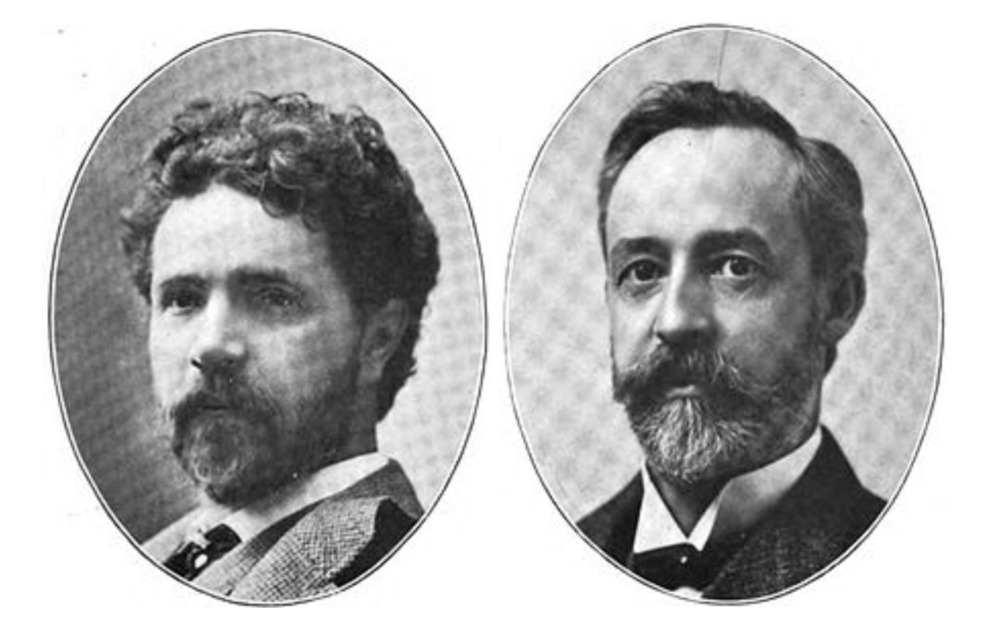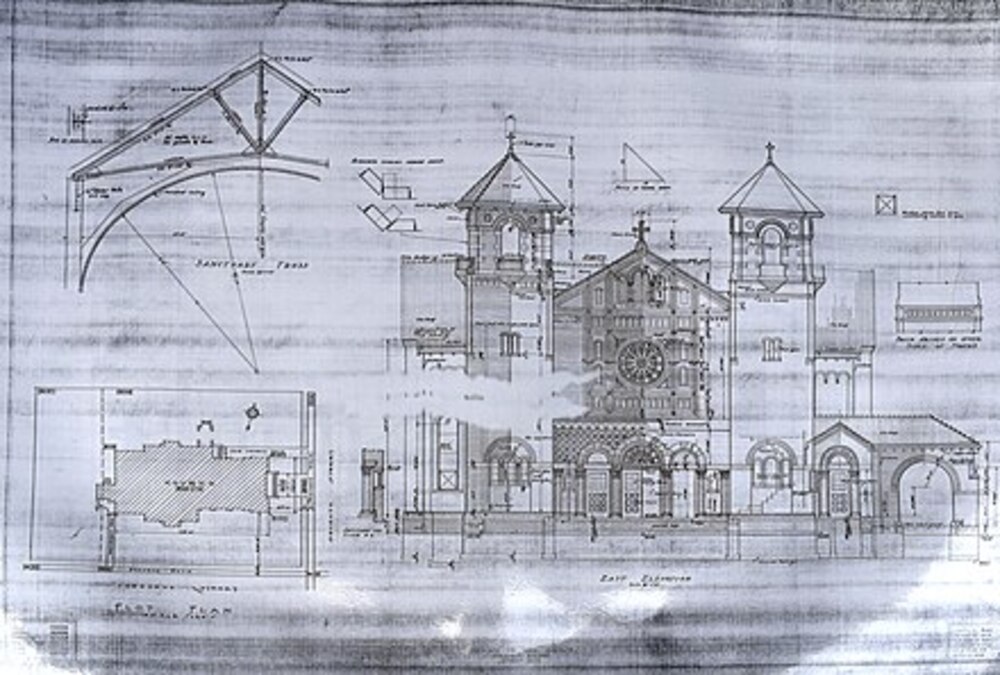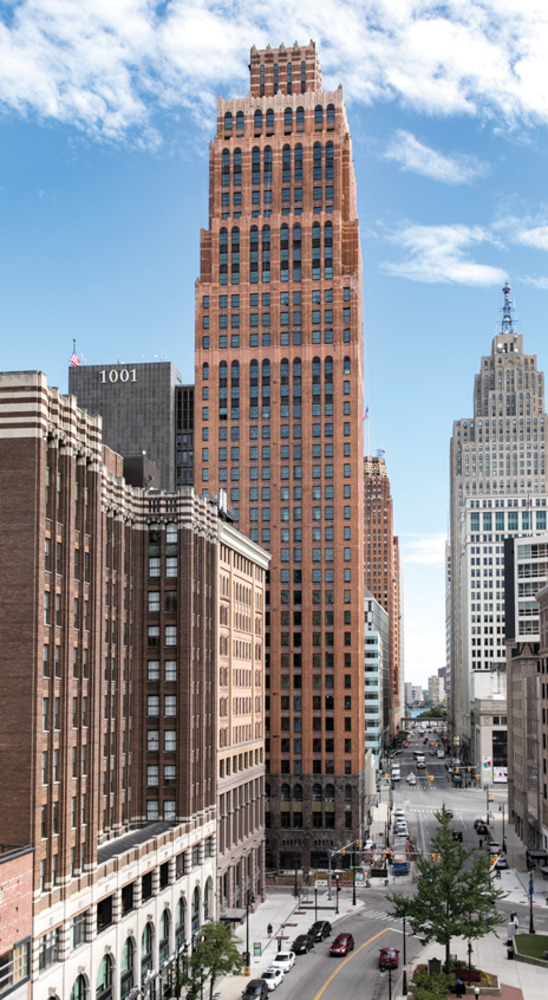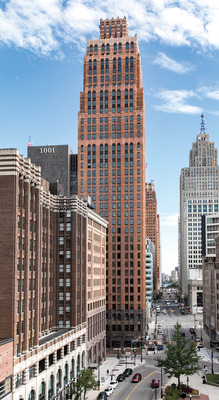The History of Donaldson and Meier
By Alexandra Hodson and Evan McCulloch
In 1880 John M. Donaldson and Henry J. Meier founded an architecture firm, with their offices situated in a three-corner room in the flat-iron building situated on the junction of Michigan and Lafayette, they were in the center of industrializing Detroit. One of the first projects ever worked on by the newly formed firm was the Unitarian Universalist Church in Ann Arbor Michigan (seen below). This building, designed in a Richardsonian romanesque style, was reflective of the period. The romanesque style is characterized by round arches, thick stonework, and small windows. While constructed in 1881, the building is still standing and utilized to this day and was listed on the national register of historic places in 1978.
While the career of this firm began with a church, they came to design many notable buildings all over the Detroit area in a variety of styles and techniques. The romanesque style was a popular style in their catalog, and the firm went on to design multiple churches in this style throughout their career. Outside of churches, an example of romanesque architecture can be found in the Detroit-based Campbell Symington House, which was completed in the early 1880s and is still standing to this day. A preliminary example of Donaldson and Meier’s interpretation of the neoclassical style can be found in the Valpey Building in downtown Detroit, which is now nestled between tall office buildings. The pale, straight-cut columns are a hallmark of this style and would be found in Alumni Memorial Hall as well.
Unfortunately, Henry J. Meier passed away in 1917, leaving Donaldson to design for the firm on his own. Continuing to find work with churches, another notable romanesque construction was St. Joseph Church in 1922 in Port Huron Michigan. This church is a gorgeous space that is still utilized today. In 1928, the firm was hired to design the Beaumont Tower, which is a 104 ft tall tower structure that stands at the center of Michigan State's Campus. One of the most notable buildings in Donaldson’s career is the David Stott Building. This 38-story building constructed in 1929 opened just before the depression hit and epitomized the advances in structural engineering of the time. This building was tall and slender in an art deco style and red brick, with tapering setbacks as the building advanced in height. Their style evolved and matured over time as Donaldson and Meier experimented with a variety of different buildings, but we can say with confidence that Alumni Memorial Hall was one of their highlights.
Created For
K-12 EducatorK-12 Student
Museum Visitor
UMMA Docent
UMMA Staff
University Faculty
University Student
Rate this Resource
AVG: 0 | Ratings: 0
& Author Notes
All Rights ReservedLast Updated
December 10, 2022 4:51 p.m.Report
Reporting Policy





